



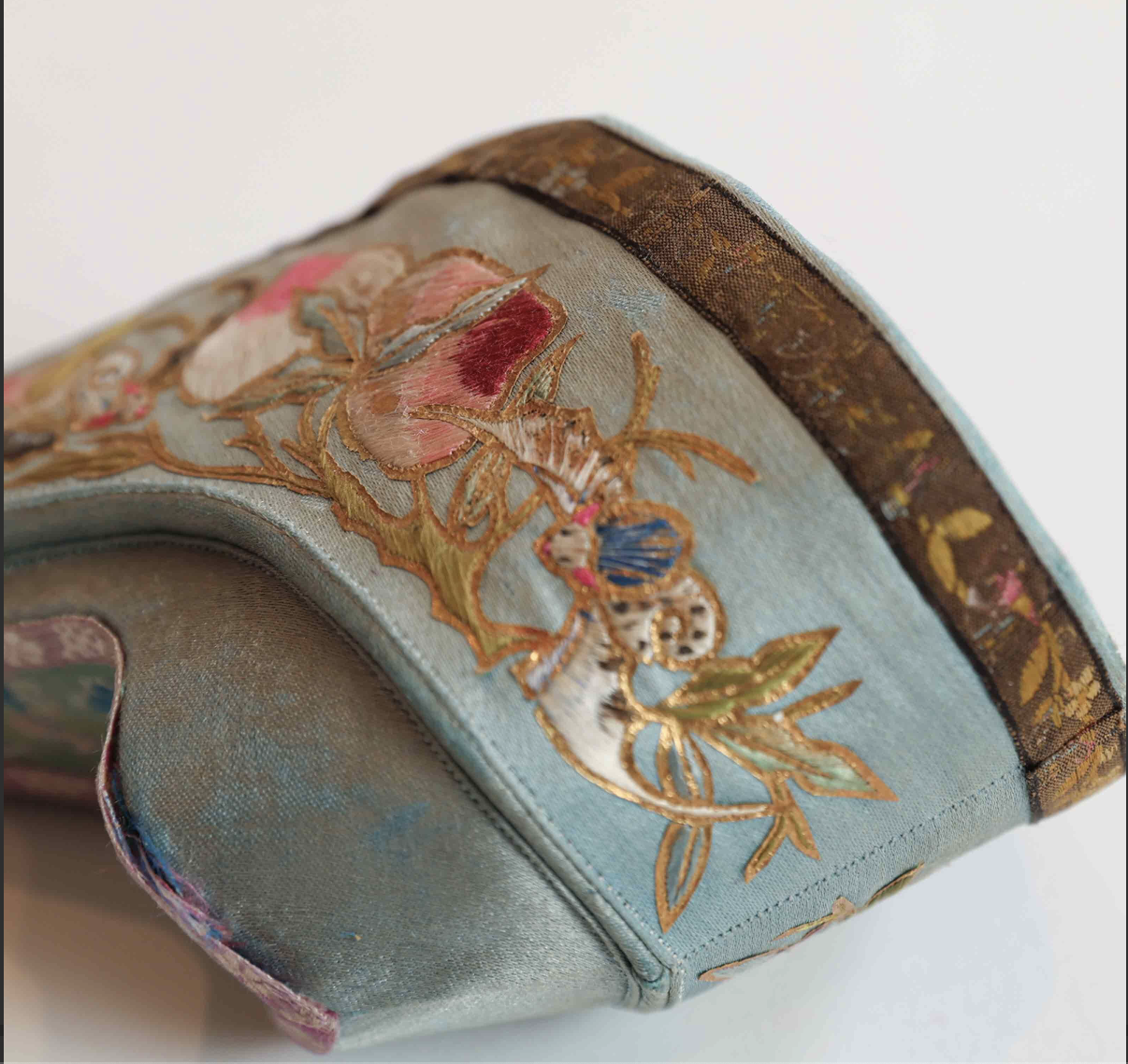
The Lotus and the Maiden: The Practice of Foot Binding and Women’s Role in Chinese Society
Foot binding, a prominent Chinese custom, involved the intentional deformation and constriction of the feet of young girls to modify their shape and size. The feet that underwent this procedure were termed “lotus feet,” while the specialised shoes crafted for these modified feet were referred to as lotus_shoes.
Within the context of late imperial China, the binding of feet was emblematic of social status and feminine aesthetics. Nonetheless, this practice inflicted considerable pain and led to enduring physical impairments amongst women, severely curbing their mobility.
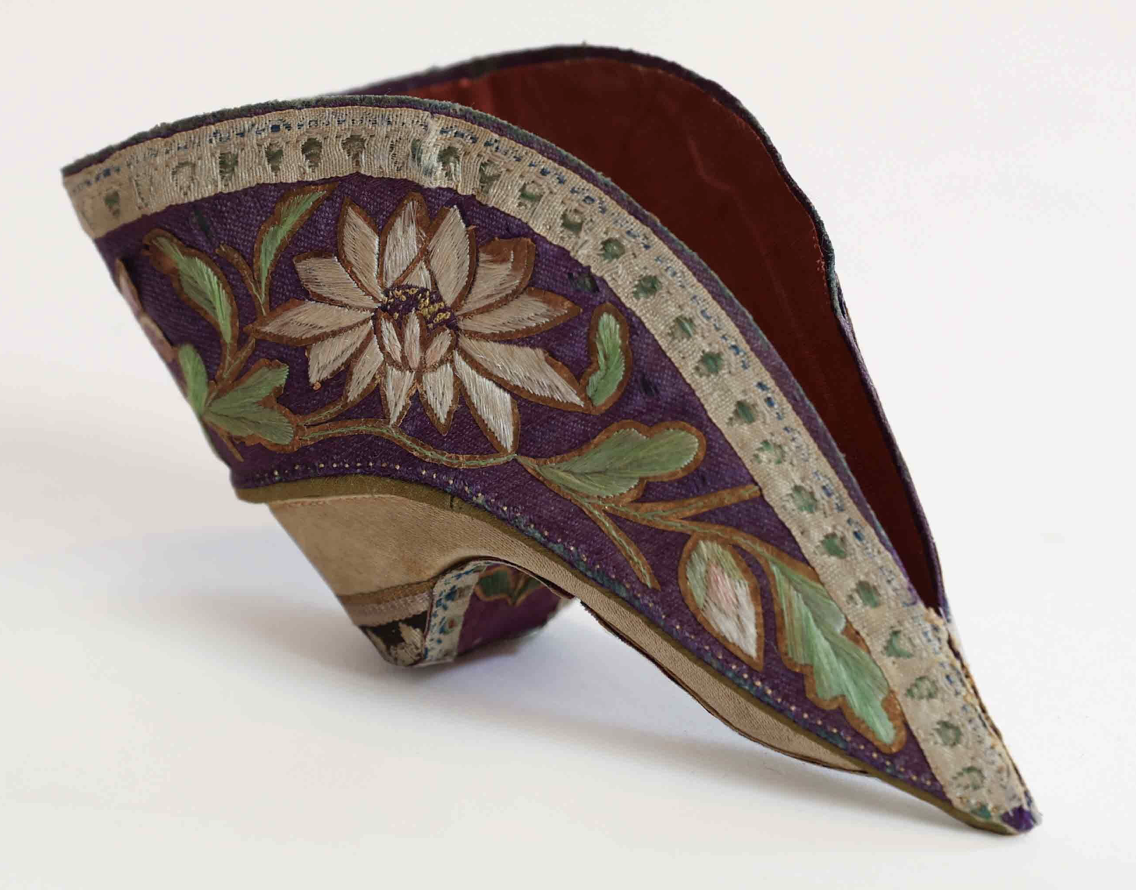 Silk Embroidered Foot binding Shoe, China, c.19th – 20th century; Acc No ZI2017.501020.4 ASIA; Source: The Zay
Zay: (Arabic: costume, Pl. azyaā’), a set of clothes in a style typical of a particular country or historical period. Initiative
Silk Embroidered Foot binding Shoe, China, c.19th – 20th century; Acc No ZI2017.501020.4 ASIA; Source: The Zay
Zay: (Arabic: costume, Pl. azyaā’), a set of clothes in a style typical of a particular country or historical period. Initiative
Multiple apocryphal narratives exist concerning the genesis of foot binding prior to its formal institutionalisation during the Song dynasty – 960-1279 CE. It is postulated that this custom may have originated among courtly dancers during the Five Dynasties and Ten Kingdoms era in 10th-century CE in China, subsequently gaining popularity amongst the upper echelons of society.
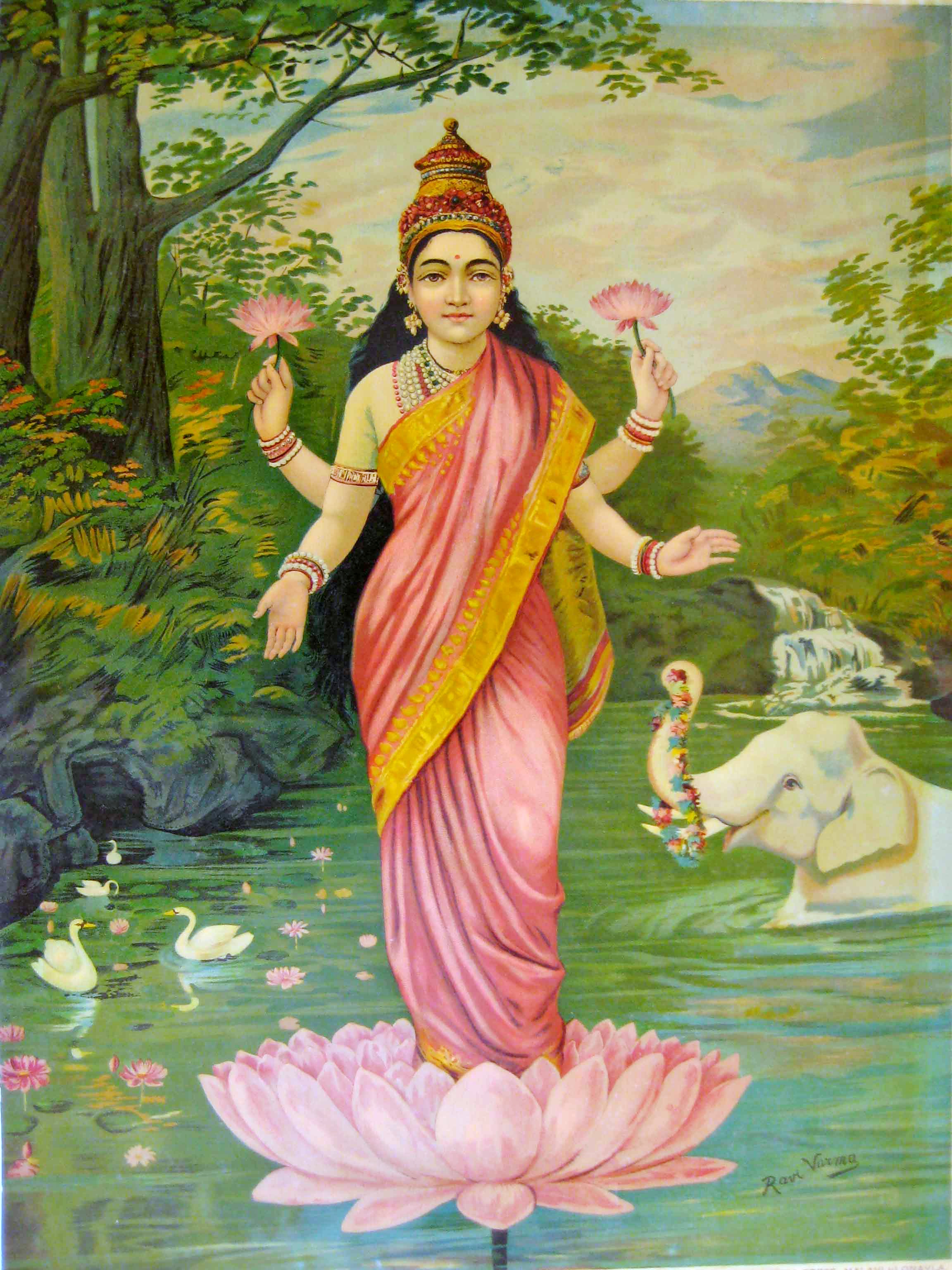 Lakhmi, the Goddess of Wealth (Hinduism), by Raja Ravi Verma, India, c.1848-1906; Source:, https://commons.wikimedia.org/wiki/File:Lakshmi_by_Raja_Ravi_Varma.jpg
Lakhmi, the Goddess of Wealth (Hinduism), by Raja Ravi Verma, India, c.1848-1906; Source:, https://commons.wikimedia.org/wiki/File:Lakshmi_by_Raja_Ravi_Varma.jpg
The conceptual and aesthetic underpinnings of foot binding possibly derive from the Buddhist legend of Padmavati, whose feet were associated with the blossoming of lotus flowers. Within Eastern philosophical and religious frameworks, such as Hinduism and Buddhism, the lotus symbolises virtue and prosperity, rendering it inherently linked to femininity.
 The boy Buddha (Padmasambhava) rising up from lotus, Vietnam, Trần-Hồ dynasty, c.14th – 15th century; Source: National Museum of Vietnamese History, Hanoi; https://commons.wikimedia.org/wiki/File:National_Museum_Vietnamese_History_35_(cropped).jpg
The boy Buddha (Padmasambhava) rising up from lotus, Vietnam, Trần-Hồ dynasty, c.14th – 15th century; Source: National Museum of Vietnamese History, Hanoi; https://commons.wikimedia.org/wiki/File:National_Museum_Vietnamese_History_35_(cropped).jpg
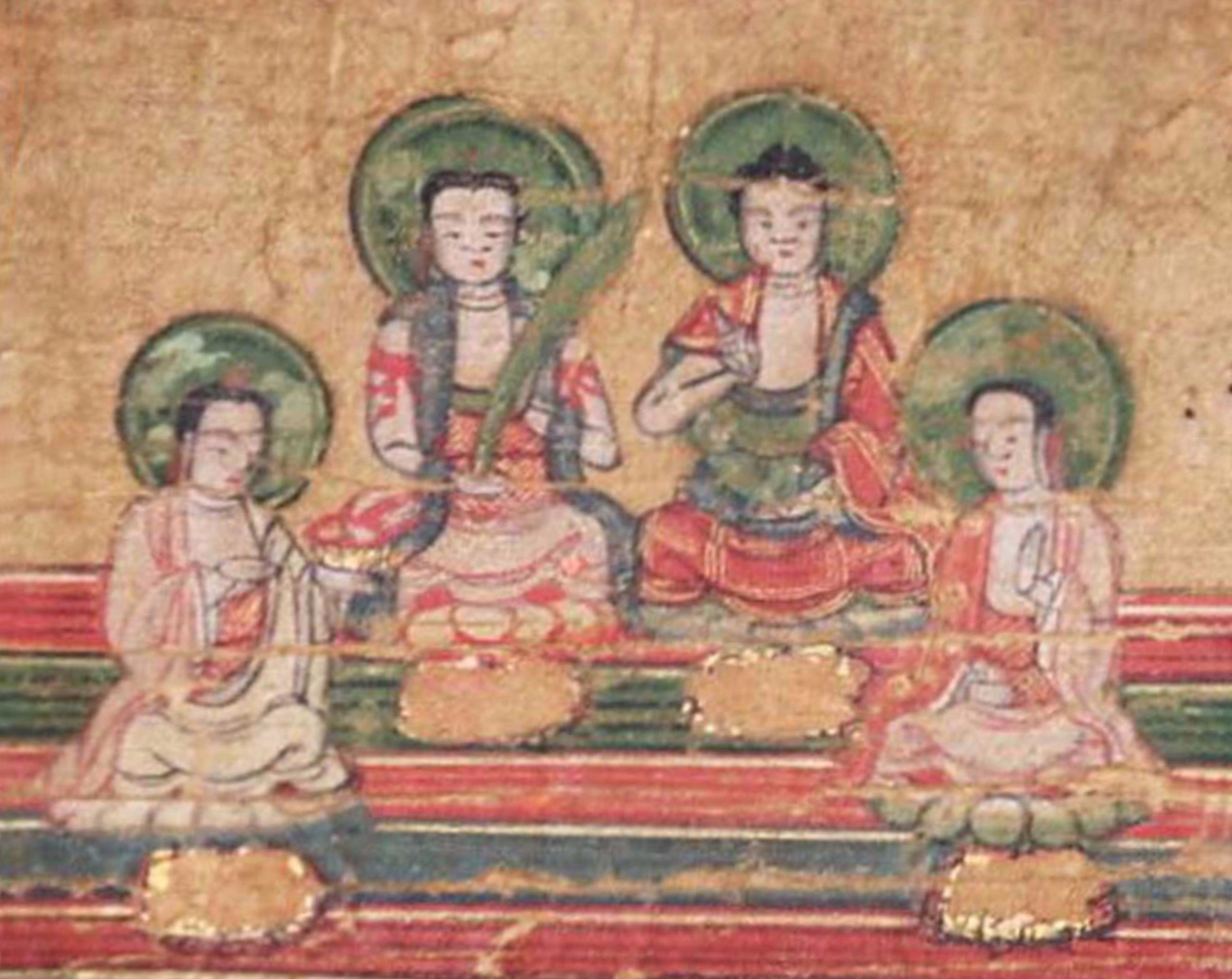
The four primary prophets of Manichaeism in the Manichaean Diagram of the Universe (from left to right: Mani, Zoroaster, Buddha and Jesus); Source: https://www.csct.ugent.be/file/62
The prevalence and adoption of foot binding exhibited temporal and geographical variations, contingent on societal strata and regional distinctions. Foot binding eventually diffused into lower social strata by the Qing dynasty – 1636–1912 CE. The Manchu rulers, encompassing both the Later Jin dynasty – 1616-1636 CE – and the Qing dynasty, endeavoured to proscribe foot binding during the 17th century, albeit unsuccessfully. It has been approximated that during the 19th century, 40–50% of Chinese women could have been afflicted by foot binding, with the prevalence approaching near totality among upper-class Han Chinese women. In fact, in some locales, foot binding augmented matrimonial prospects.
Until the early 1900s, lotus_shoes were predominantly crafted within households by the very women who wore them. Constructed delicately from materials such as cotton or silk, these shoes were compact enough to be held in the palm of a hand. Shoes lacking components of wood, leather, or metal could be fashioned entirely within domestic settings.
Women employed implements such as scissors, needles and thread, bamboo embroidery frames, awls, and miniature irons for their production. Certain designs incorporated heels or wedge-shaped soles. Outdoor footwear frequently featured wooden heels or soles, which were crafted outside of homes by male carpenters. Discrepancies in the shape of wooden soles existed across regions, with southern designs exhibiting low, coin-shaped heels, while northern counterparts featured arched soles.
 Silk Embroidered Foot binding Shoe, China, c.19th – 20th century; Acc No ZI2017.501020.3 ASIA; Source: The Zay
Zay: (Arabic: costume, Pl. azyaā’), a set of clothes in a style typical of a particular country or historical period. Initiative
Silk Embroidered Foot binding Shoe, China, c.19th – 20th century; Acc No ZI2017.501020.3 ASIA; Source: The Zay
Zay: (Arabic: costume, Pl. azyaā’), a set of clothes in a style typical of a particular country or historical period. Initiative
Lotus_shoes manifested in diverse styles and hues, typically boasting intricate ornamentation that encompassed embroidered depictions of fauna and flora, which often extended onto the sole of the shoe. Furthermore, these shoes often bore motifs symbolising good fortune, along with culturally significant wordplay. Certain designs exclusively covered the tip of the foot, creating the illusion of a diminutive bound foot when concealed beneath long skirts. Stylistic choices and design variations in lotus_shoes were contingent upon factors encompassing regional cultures, local traditions, and economic circumstances.
The selection of shoe colours was guided by age and occasion. Young women favoured purple and vibrant green shoes, while those in middle age opted for hues such as shades of blue, grey, and green. Black, associated with contusions, remained unpopular, except amongst elderly women. The colour red, connoting virtue was reserved for special events such as weddings, anniversaries, and New Year festivities.
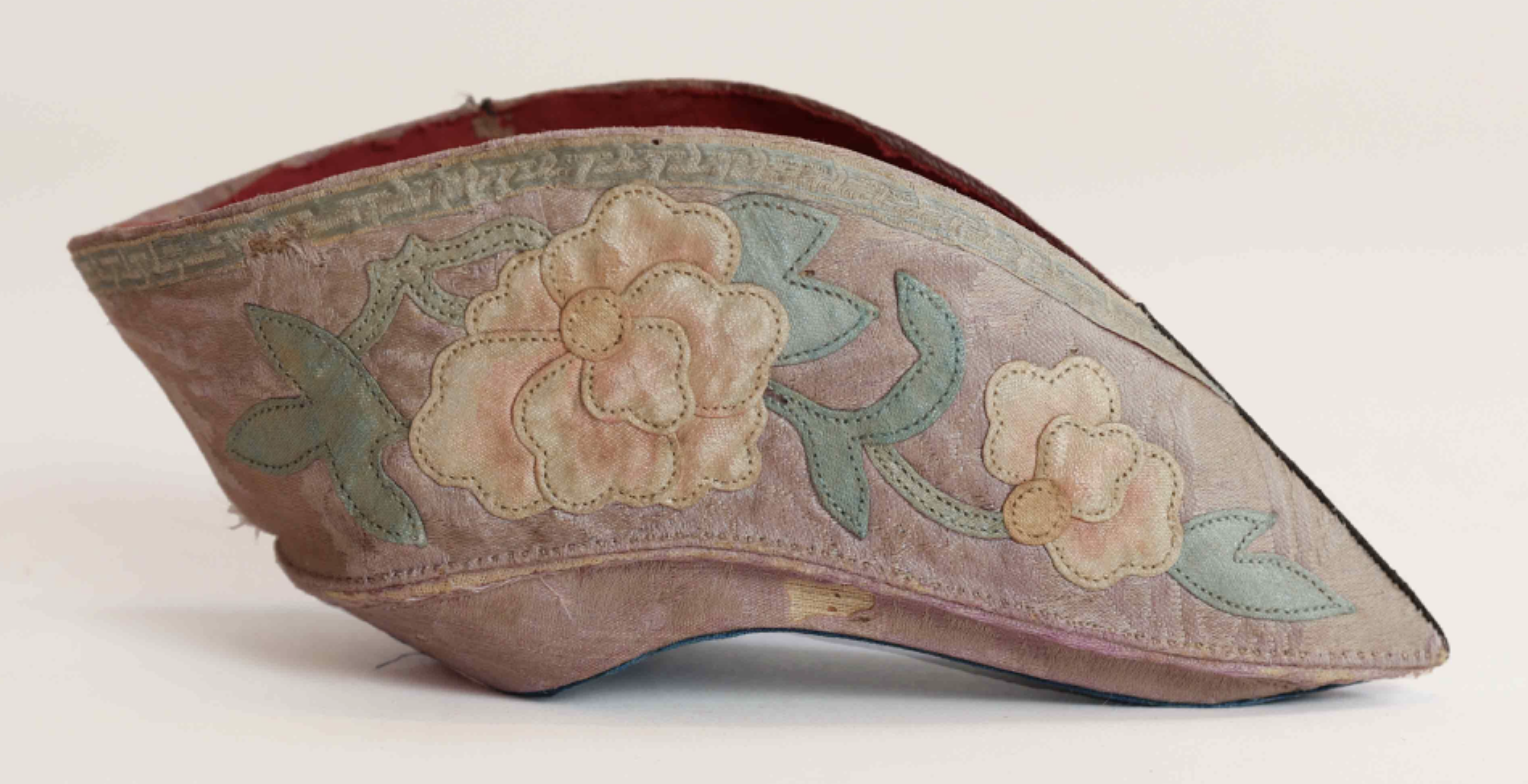 Silk Embroidered Foot binding Shoe, China, c.19th – 20th century; Acc No ZI2017.501020.1 ASIA; Source: The Zay
Zay: (Arabic: costume, Pl. azyaā’), a set of clothes in a style typical of a particular country or historical period. Initiative
Silk Embroidered Foot binding Shoe, China, c.19th – 20th century; Acc No ZI2017.501020.1 ASIA; Source: The Zay
Zay: (Arabic: costume, Pl. azyaā’), a set of clothes in a style typical of a particular country or historical period. Initiative
Although the practice of foot binding did not solely pertain to urban elites, the experience and prevalence of it exhibited distinctions based on class and region with the commencement age spanning from five to eight years old. The practice curtailed mobility, thereby limiting engagement in physically demanding tasks. Families possessing the means to forgo a daughter’s labour-intensive contributions initiated it at an earlier age. Consequently, the onset of foot binding was inversely related to social class, with upper-class families more willing to sacrifice their daughters’ physical labour. Nevertheless, foot binding did not signify the cessation of women’s economic productivity.
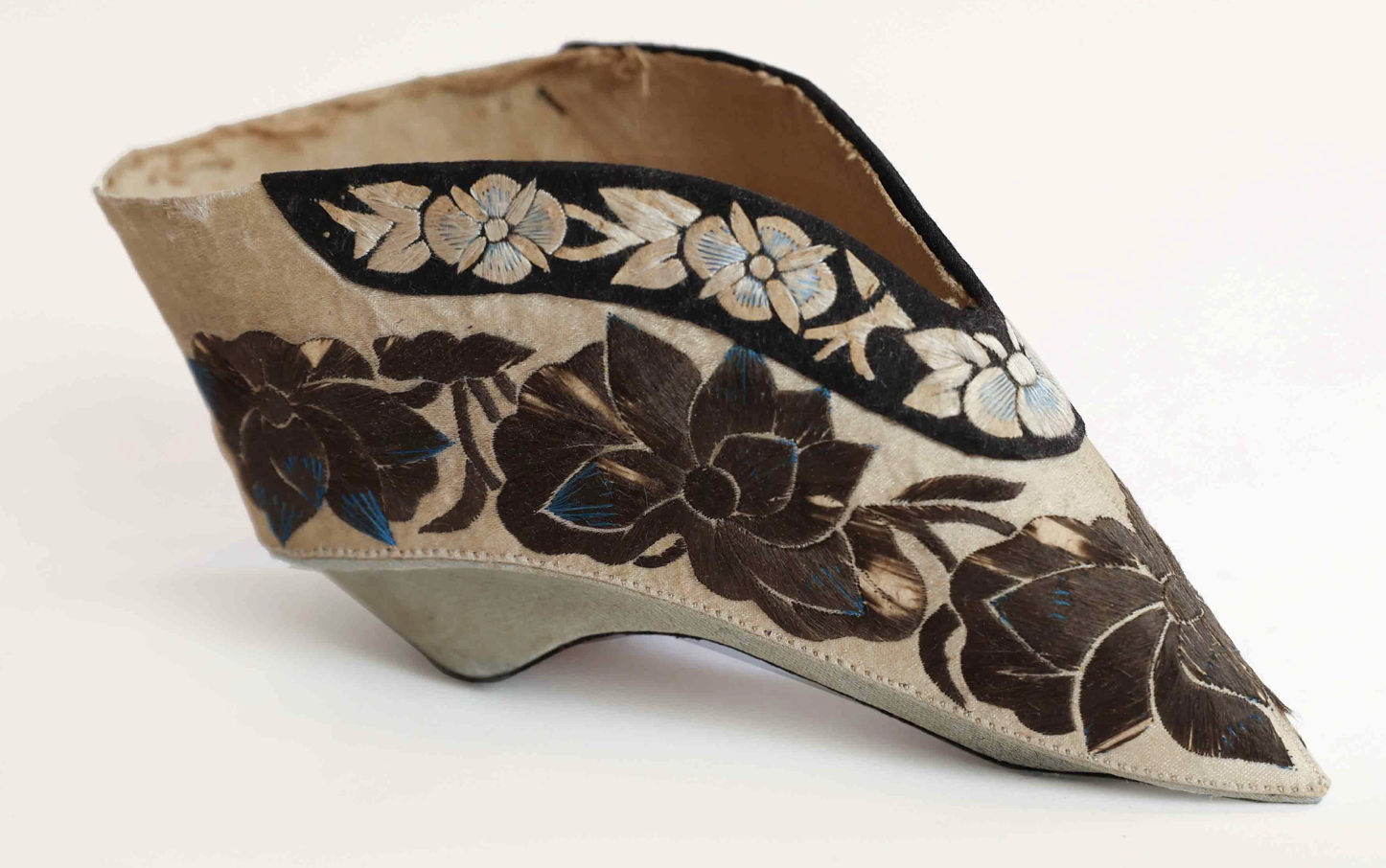 Silk Embroidered Foot binding Shoe, China, c.19th – 20th century; Acc No ZI2017.501020.2 ASIA; Source: The Zay
Zay: (Arabic: costume, Pl. azyaā’), a set of clothes in a style typical of a particular country or historical period. Initiative
Silk Embroidered Foot binding Shoe, China, c.19th – 20th century; Acc No ZI2017.501020.2 ASIA; Source: The Zay
Zay: (Arabic: costume, Pl. azyaā’), a set of clothes in a style typical of a particular country or historical period. Initiative
Although, it often bore connotations linked to sexuality, it more closely aligned with values like modesty, virtue, and morality. The desirability of brides with bound feet was not always for the reasons commonly assumed. Contrary to popular belief, parents did not acquiesce to their sons’ desires for a sexually attractive wife. Selecting an overtly seductive bride actually posed a threat to family harmony. Additionally, sons typically had little influence over the choice of a partner, as most marriages were arranged between families. Marriage was consistently approached as a family-to-family matter, orchestrated by parents who were deemed to possess superior judgment. Bound foot brides were sought after by prospective in-laws because it symbolised traits of modesty and moral virtue.
In a Chinese household, children were traditionally regarded as gender-neutral until they reached the age of maturity. At this point, boys and girls would lead distinct lifestyles. Families of means, who could afford to forgo their children joining the workforce, would typically send their sons to school and arrange for their daughters to undergo foot binding. According to the classical Chinese medical treatise known as “The Yellow Emperor’s Classic of Internal Medicine,” boys would reach maturity during their eighth lunar cycle, while girls would do so during their seventh, which corresponds to five or six years by the Western calendar.
For a girl of five or six, these practices and their symbolic meanings may have held little immediate significance. However, she understood that the foot binding ritual marked her entry into the broader community of women. Conversely, for the mother, it represented the initial step in teaching her daughter that a woman’s life is rife with uncertainties and vulnerabilities. This lesson would eventually culminate in imparting the knowledge that the surest means to solidify one’s position in society was through the birth of a son.
The ritual of foot binding in Chinese society was a solemn affair, typically attended exclusively by the women of the household in the inner sanctums of the women’s quarters. The absence of men from this ceremony held symbolic significance, foreshadowing their future role. Following this, a decade-long grooming process ensued to prepare the girl for her role as an ideal bride. Her worth hinged heavily on her ability to bear children, particularly sons. Therefore, the pain endured during foot binding, marking a girl’s transition into adulthood, held a symbolic parallel to the pain of childbirth within Chinese society.
These established norms and practices delineating a woman’s role in Chinese society found poignant expression in the song “Honour to Us All” from the renowned American animated film, Mulan by The Walt Disney studio. The film was an adaptation of a legendary Chinese folk tale believed to be dating back to the Northern Wei period of c. 4th century CE about a young woman named Hua Mulan.
“We all must serve our EmperorWho guards us from the Huns A man by bearing armsAnd a girl by bearing sons”
While the initiation process for girls commenced in the seventh cycle of the lunar year, they concluded their active societal role in their forty-ninth cycle, typically signifying menopause. By this time, it was acknowledged that she had dutifully fulfilled her familial responsibilities by bearing and caring for children, thus earning the privilege of becoming a mother-in-law.
This transition marked the onset of a different phase of preparation. In Chinese society, this period in a woman’s life was characterised by artistic pursuits, including the crafting of her own funerary shoes, which held particular significance as symbols of longevity. These shoes were commonly unadorned in a shade of blue, with embroidered under-soles featuring patterns that combined a ladder with a lotus blossom or a white crane – signifying her path to the Heavens.
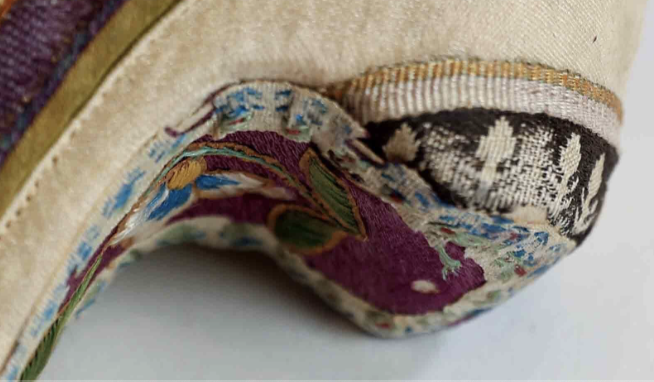 Silk Embroidered Foot binding Shoe, China, c.19th – 20th century; Acc No ZI2017.501020.4 ASIA; Source: The Zay
Zay: (Arabic: costume, Pl. azyaā’), a set of clothes in a style typical of a particular country or historical period. Initiative
Silk Embroidered Foot binding Shoe, China, c.19th – 20th century; Acc No ZI2017.501020.4 ASIA; Source: The Zay
Zay: (Arabic: costume, Pl. azyaā’), a set of clothes in a style typical of a particular country or historical period. Initiative
Thus, it is evident how these shoes often functioned as outlets for women’s identities during this period. Beyond marriage prospects, the primary impetus for the practice of foot binding was its association with women’s textile work, which held prominent cultural significance. Women were frequently engaged in weaving and textile work, with their productivity celebrated through practices such as the creation of lotus_shoes. In this context, the lotus_shoes represented a source of pride and value. Over time, this tradition evolved from one rooted in women’s desire for embellishment to acquire a new significance and women redefined the perception of foot binding, associating it with their labour and familial roles.